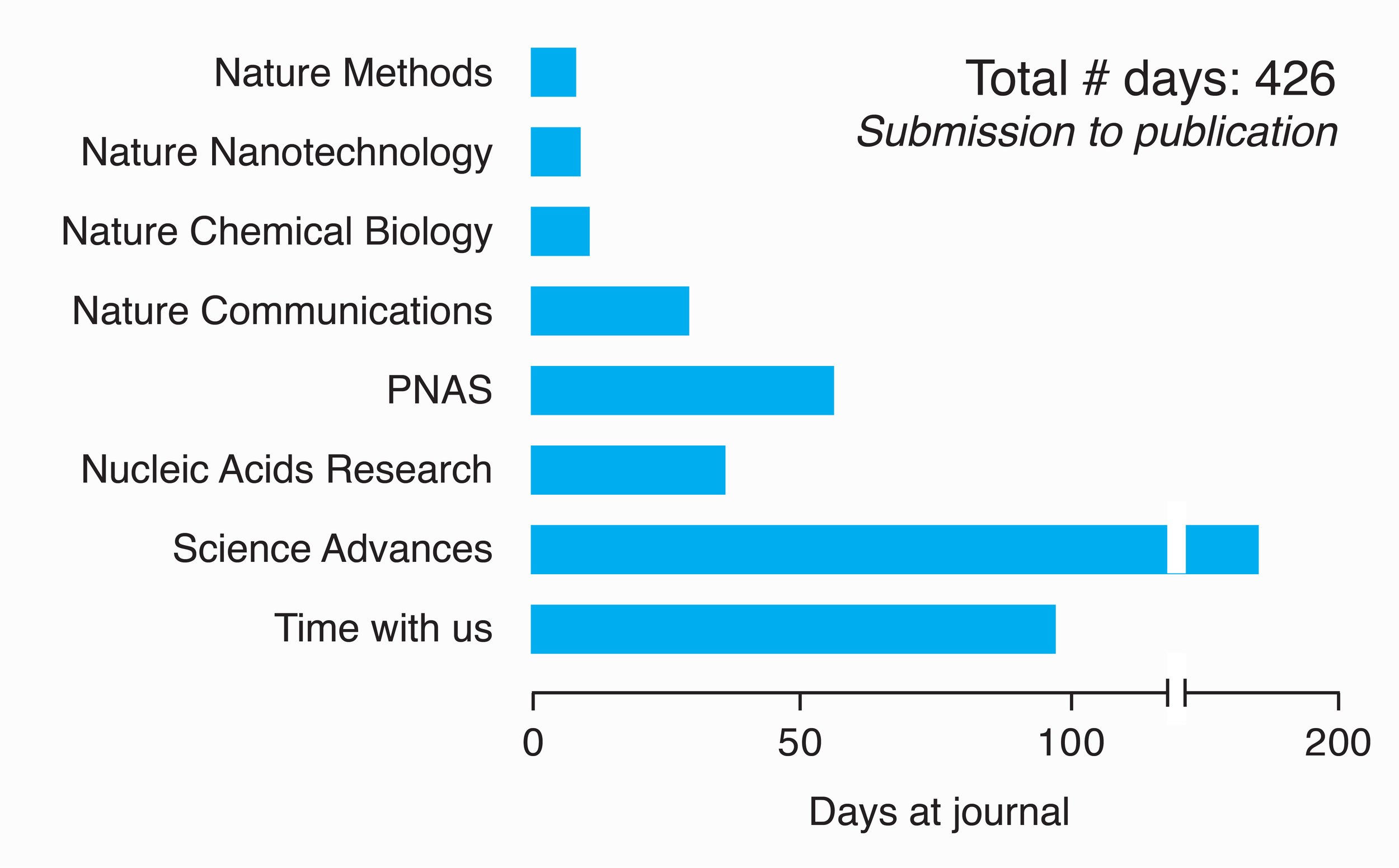Celebrating the publication of a research article is one of the highlights of an academic career. Recently, our lab celebrated the publication of our microRNA detection technique in the journal Science Advances. Our first submission of this paper (to a different journal) was on January 11, 2018. After attempts at several journals, it was published 14 months later, on March 13, 2019. To put it in context: I worked on the project and wrote the preliminary draft as a postdoctoral fellow, left to work for a start-up for two years, returned to work in my postdoc institution as a scientist, and then the paper was published.
Time our article spent at different journals, in order of submission from top to bottom.
This long time frame for publishing is not an outlier in science, and is seen commonly in top tier journals (read the related Nature news feature). Much of the delay comes from the choice of journals. It is often tempting to "shop" at top tier journals before climbing down the ladder. We were ambitious, especially for this project that was three years in the making.
Average number of days at journals, either editorially rejected or sent out for peer-review.
We shopped at seven different journals starting with Nature Methods (see figure above). At the first 3 journals (Nature Methods, Nature Nanotechnology and Nature Chemical Biology), our paper was editorially rejected. Our paper spent on average 47 days per journal (see figure on right). In the next 4 journals we submitted to, the paper was sent out for peer-review in all of them. In these journals, our paper spent on average 75 days in each journal. During this time, we also posted our article on bioRxiv for visibility. In the Nature news feature analyses, the median review time (submission to acceptance) was reported to be on average ~100 days, with the number increasing many fold in some journals in recent years (figure below). The average number in our case is higher because the manuscript spent 6 months in Science Advances where it was eventually accepted. The average time it spent before the "final" journal was 24 days at each journal, with a median of 20 days. Steve Royle, a professor at The University of Warwick did the math for the publication times for his own articles and compares the duration to the human gestation period of 9 months. In his article, he comments that this timeline is perhaps not uncommon in biology. I'm not a biologist, and this is the first time I felt a paper taking a long time to published, with a submission to publication time of 426 days! We waited more than the gestation period for our article to be out, but it was worth the wait.
Source: Does it take too long to publish research? Nature 2016, 530, 148-151.



